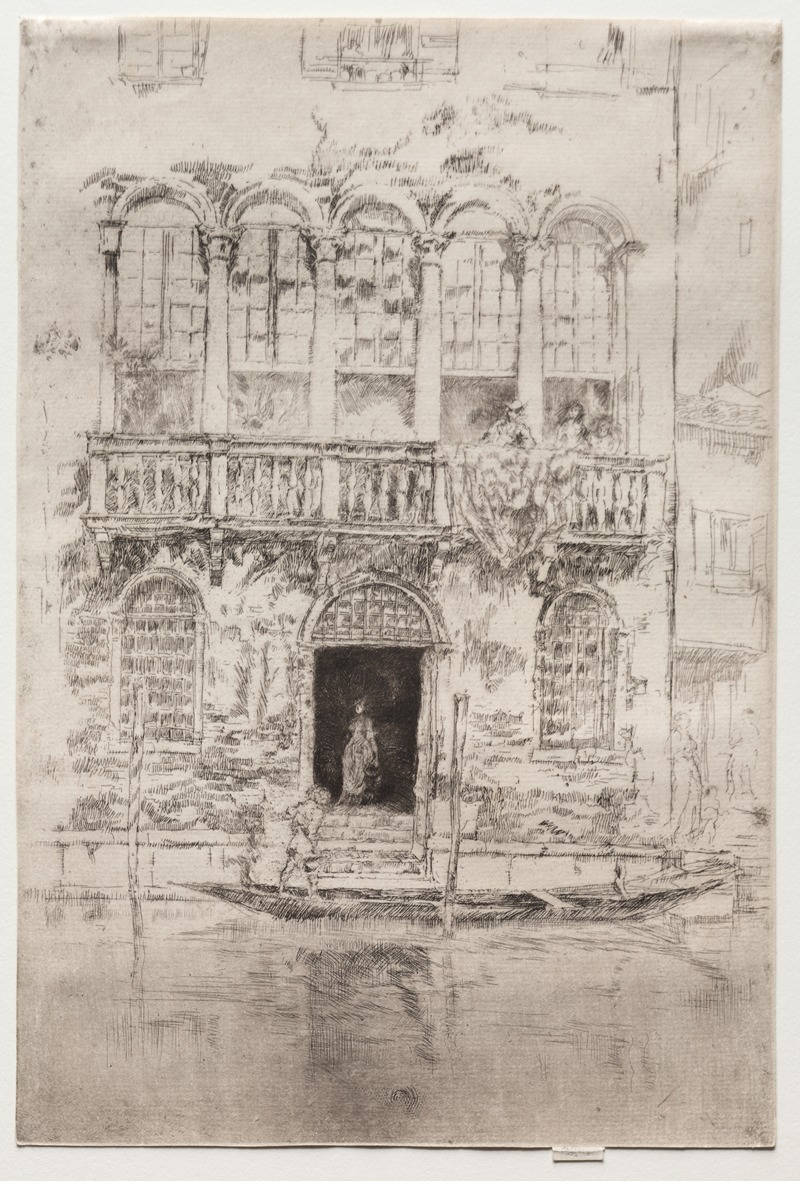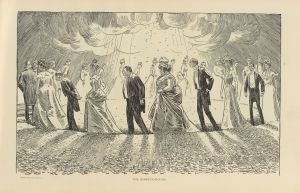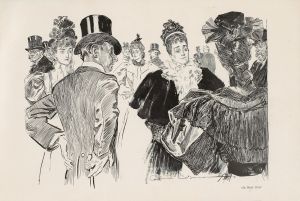
The Balcony
A hand-painted replica of James Abbott McNeill Whistler’s masterpiece The Balcony, meticulously crafted by professional artists to capture the true essence of the original. Each piece is created with museum-quality canvas and rare mineral pigments, carefully painted by experienced artists with delicate brushstrokes and rich, layered colors to perfectly recreate the texture of the original artwork. Unlike machine-printed reproductions, this hand-painted version brings the painting to life, infused with the artist’s emotions and skill in every stroke. Whether for personal collection or home decoration, it instantly elevates the artistic atmosphere of any space.
James Abbott McNeill Whistler's painting "The Balcony" is a notable work by the American-born, British-based artist, who is best known for his innovative style and influence on the art world during the late 19th century. Whistler, an advocate of "art for art's sake," often focused on the aesthetic arrangement of color and form, and "The Balcony" is a testament to his artistic philosophy.
"The Balcony" was created during a period when Whistler was deeply engaged with the principles of the Aesthetic Movement, which emphasized beauty and visual harmony over narrative content. This movement was a reaction against the moralizing art of the Victorian era, and Whistler was one of its most prominent figures. His work often drew inspiration from a variety of sources, including Japanese art, which was becoming increasingly popular in Europe at the time.
In "The Balcony," Whistler employs a subtle palette and a composition that reflects his interest in Japanese prints and their use of space and perspective. The painting depicts figures on a balcony, though the specifics of the scene are less important than the overall mood and arrangement of elements. Whistler's use of color and light creates a harmonious and tranquil atmosphere, inviting viewers to appreciate the beauty of the scene without searching for a deeper narrative meaning.
Whistler's technique in "The Balcony" showcases his mastery of tonal harmony. He often used a limited color palette to achieve a sense of unity and balance within his compositions. This approach is evident in "The Balcony," where the interplay of light and shadow, along with the careful placement of figures and objects, contributes to the painting's serene quality.
The painting reflects Whistler's belief in the importance of composition and design over subject matter. He was known for his meticulous attention to detail and his ability to create works that were both visually striking and emotionally resonant. "The Balcony" exemplifies these qualities, as it captures a moment of quiet beauty without relying on a specific narrative.
Whistler's influence on the art world extended beyond his own work. He was a key figure in the development of modern art, and his ideas about the role of the artist and the purpose of art were highly influential among his contemporaries and later generations of artists. His emphasis on aesthetic beauty and formal qualities helped pave the way for movements such as Impressionism and Symbolism.
"The Balcony" is a reflection of Whistler's artistic vision and his commitment to creating works that transcend traditional boundaries. While the painting itself may not be as widely recognized as some of his other works, such as "Arrangement in Grey and Black No. 1" (commonly known as "Whistler's Mother"), it remains an important example of his contribution to the art world.
In summary, "The Balcony" by James Abbott McNeill Whistler is a significant work that embodies the principles of the Aesthetic Movement and showcases the artist's dedication to beauty and harmony in art. Through his innovative use of color, light, and composition, Whistler created a painting that continues to be appreciated for its aesthetic qualities and its role in the evolution of modern art.


















